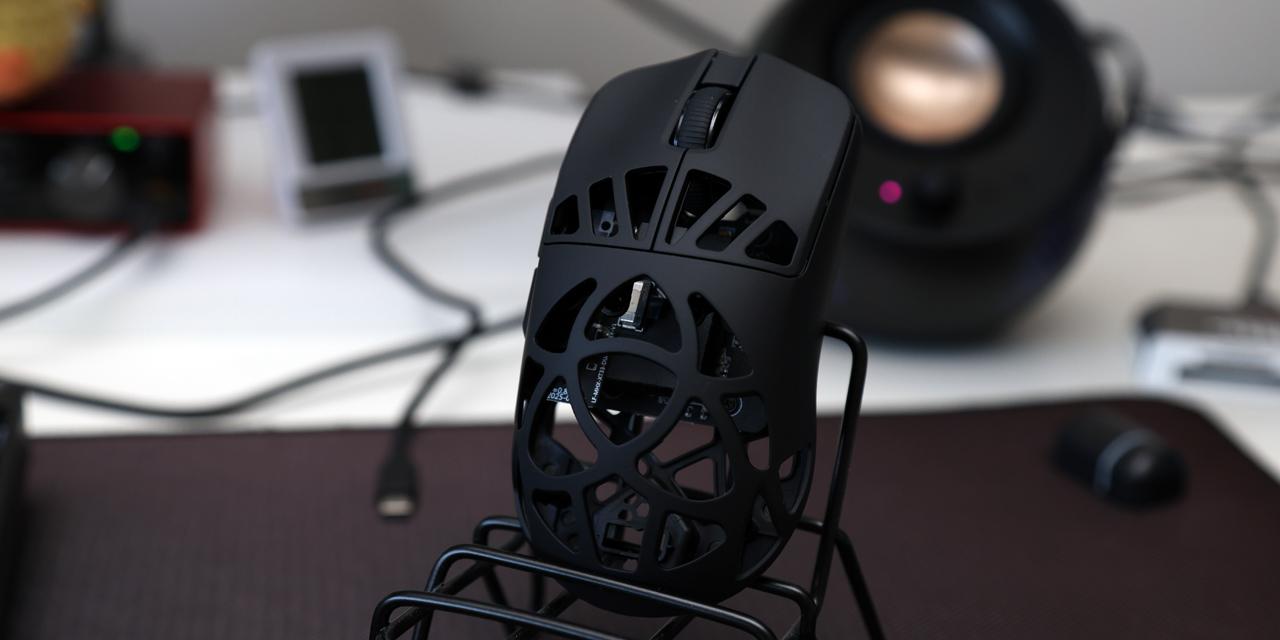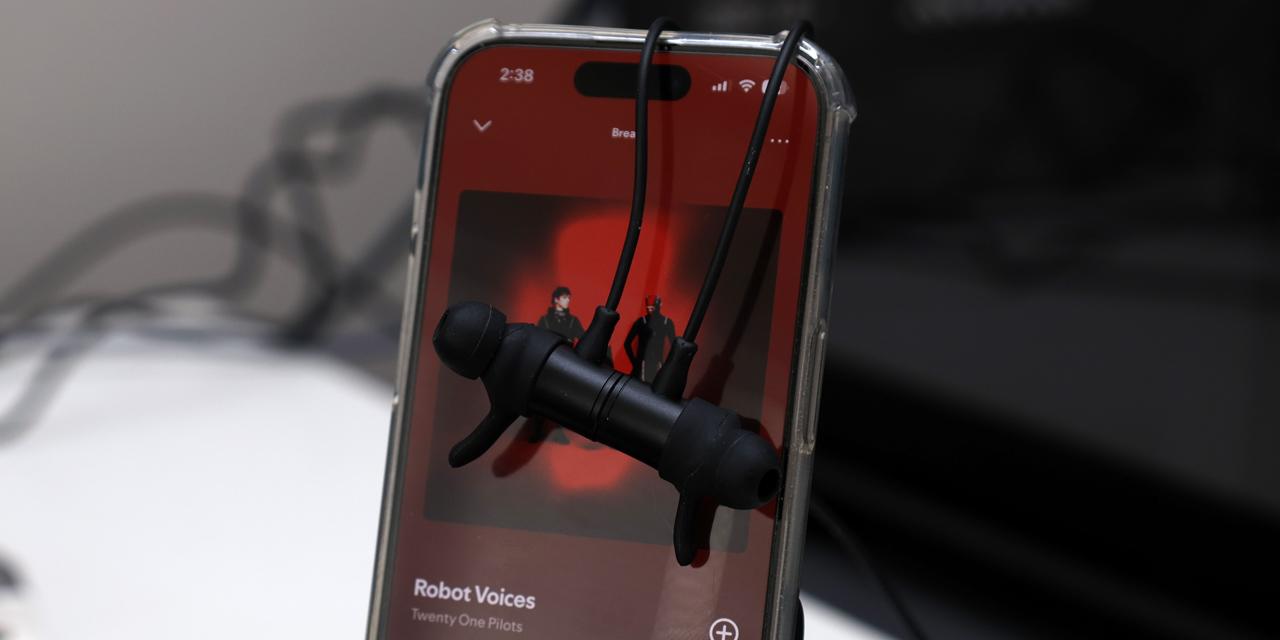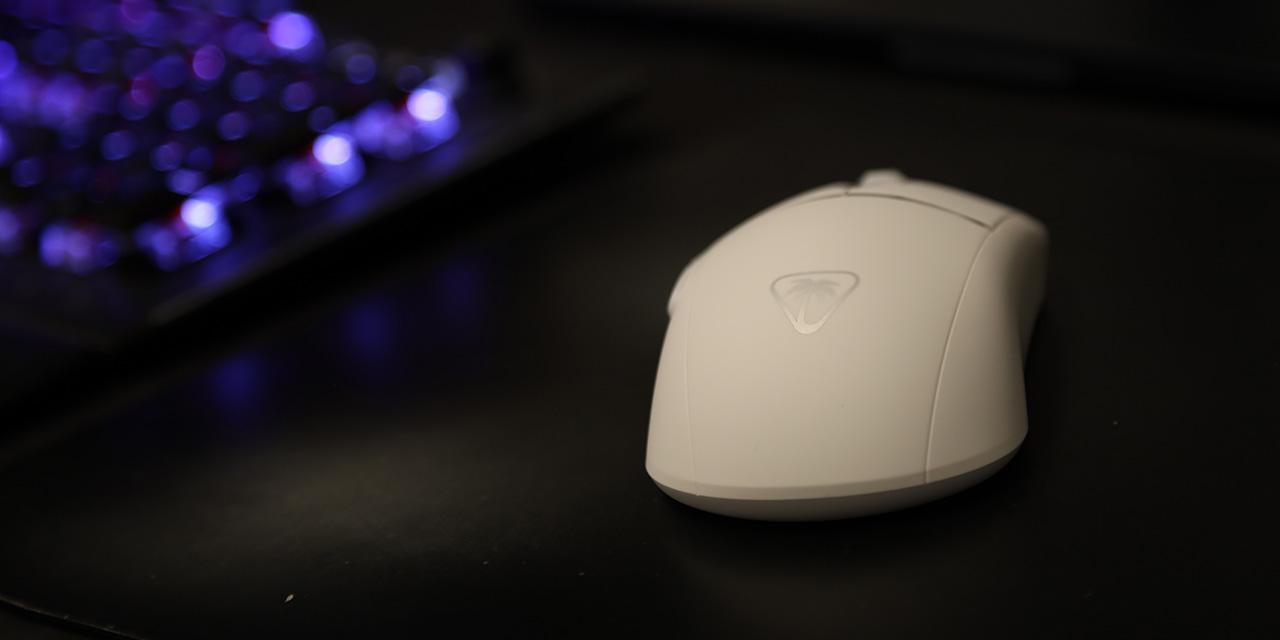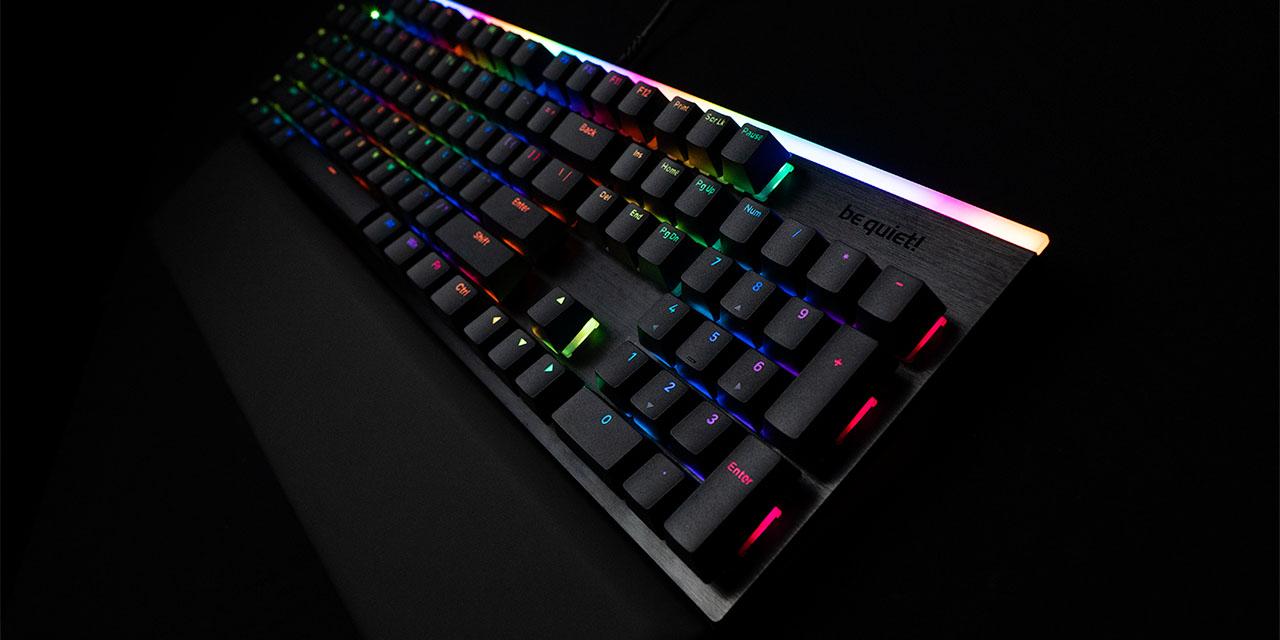Page 2 - A Closer Look - Hardware and Software
Turtle Beach describes this mouse as a "high performance lightweight wireless esports mouse". I think this is a good description of the intention of this mouse, so we are here to examine the merits of this product in use. Like the Burst Pro, Burst Pro Air, and Burst II Air the Burst II Pro is a symmetrical mouse, although after so many years, I have yet to see anyone use a mouse with the left hand regardless of which one is dominant. It is also important to point out it is still made for right-handed users by the way the buttons are placed. Meanwhile, its shell surface material is composed of a smooth, white plastic. Note the Burst II Pro is also available in black. Turtle Beach's logo is printed in silver on the back of the shell. A glossy chrome strip runs across the center in place of any RGB LED lighting strips. The sides are not textured, but are reasonably grippy during use.
The Burst II Pro comes in at 57g, which is very light, even though this mouse is not solely optimized for total weight savings. For reference, the Burst II Air, a mouse that is solely optimized for total weight savings, is 47g. Meanwhile, the Kone II Air is almost twice as heavy at 110g. Mice that are lower weight are desirable for first person shooter and multiplayer online battle arena games, especially if you want something for quick, swift movements. However, the reduced weight means it has less buttons, a thinner shell, and no RGB LED lighting. The mouse's center of gravity is near the middle, which lines up with the sensor at the bottom.
The Turtle Beach Burst II Pro is pretty standard when it comes to physical dimensions, measuring 122mm deep, 67mm wide, and 39mm tall. These are almost identical to the Burst II Air, and a bit wider than the 58mm-wide Burst Pro Air. You can see the mouse is built for small to average-sized hands based on these numbers. I am a palm grip type user myself, and the ROCCAT Burst II Pro fits quite well. Just for fun, I gave it a claw type grip, and it is not bad to use it at all. My hand size is pretty average, so this is good news for majority of the users.
A 1.8m PhantomFlex braided cable leads out from the front of the mouse via a short cable guide. A paracord cable would have been better, but you probably will not need the cable much thanks to the 150-hour battery life at 1000Hz polling rate, 40 hours at 8000Hz polling rate, and 165 hours over Bluetooth. The rated battery life further increases over Bluetooth at 165 hours. The mouse connects via a USB Type-C plug, which is expected in 2025. The cable is used for charging, and when connected, the Burst II Pro becomes a wired mouse. The Burst II Pro connects to your computer via a non-gold-plated USB connector. When we bring about the question of whether gold plated connectors are actually useful or not, let us just say if they were the actual pins, then possibly, since gold offers better conductivity than other metals. This theoretically establishes a better connection with your computer, but on a digital signal level, it is a discrete one or zero. If anyone tells you they can tell the difference, you can defeat their theory with a double blinded test. Additionally, if you are referring to the gold part of the connector you see on the plug, it is used for ground and does not make any physical contact electrically with your computer. In other words, it is nice to have, and it is pretty to look at, but it is not anything significant on a practical level. The lack of a gold-plated USB connector will not have any performance impact on the Burst II Pro even in wired mode.
The Turtle Beach Burst II Pro does not come with a whole lot of buttons, but it does come with more than what most people will use every day. In fact, it looks exactly the same as the Burst II Air. Combined with the previous image, you can see besides the standard left click, right click, and clickable scroll wheel, there is a forward and back button on the left, which is arguably standard nowadays. There is also a sensitivity cycle switch on the left. The mouse allows five sensitivity settings to be saved per profile, so pressing this button will cycle through the configured sensitivity steps in ascending order. I would much prefer a separate increase and decrease button, but weight is always a big part when designing a mouse nowadays. I found all buttons and switches to be within easy reach of my fingers, but will not be easily actuated by accident in a normal grip.
Beneath the buttons, the Turtle Beach Burst II Pro features pre-tensioned Titan Optical switches that have a rated lifetime of 100 million clicks. These are the same switches found in all their products in the last few years. The aim of these switches is tactile, reliable, and quick response. Obviously, these wordings are paraphrased from Turtle Beach's website, the real question is, are they any good in real life? In my opinion, they are excellent. The clicks are reasonably quiet, yet audible, giving a substantial feel to it. I did not notice any gaps with the switches. The Titan Optical's response is distinct and can be considered to be very clean.
Between the buttons and underneath the scroll wheel is a small multi-color indicator LED used for battery, DPI, and connectivity status.
A shot at the bottom of the Turtle Beach Burst II Pro optical mouse. One thing that will immediate catch your eye are three cutouts, with two used for weight savings and one to hold the USB transmitter. The tradeoff is they can accumulate dust, so do keep a note for regular cleaning. Keeping the plastic base gliding above your mousing surface are two heat-treated pure PTFE feet, which is also known as Teflon to the common person. In organic chemistry, ethylene/ethene indicates a carbon-carbon bond with two carbons and a double bond (C2H4). Tetrafluoro replaces four hydrogen atoms with fluorine atoms, making it C2F4. In non-scientific terms, poly just means a bunch of them linked together.
The Turtle Beach Burst II Pro is powered by the Owl-Eye 30K optical sensor, which is based off the PixArt PAW3950 capable of sensing up to a jaw-dropping 30,000 DPI sensitivity, but can drop as low as 50 DPI in 50 DPI increments for those who want it. It is not 1 DPI increments seen in some high-performance models, but I doubt anyone needs that level of precision adjustment. This is a higher end sensor compared to the Burst II Air, which uses the Owl-Eye 26K based off the PixArt PAW3395. It promises 750 inches per second tracking and acceleration of up to 70g. 8000Hz polling rate is standard, but can be lowered to 4000Hz, 2000Hz, or 1000Hz. No sensor rattle is noticed.
The mouse allows five profiles to be stored on board. Profile switching can also be done in software, but you can also map a button to cycle through them. The wireless USB transceiver can be stored underneath the mouse for convenience. Although the Turtle Beach Burst II Pro is Bluetooth compatible, the transceiver provides support for the company's 2.4GHz low latency wireless protocol. This is especially important for a wireless mouse. The Burst II Pro is NVIDIA Reflex compatible. A slider switch at the bottom lets you switch between Turtle Beach's 2.4GHz wireless protocol, Bluetooth, or turn the mouse off.
Turtle Beach promises up to 150-hour battery life at 1000Hz polling rate and 40 hours at 8000Hz polling rate. This is quite a bit higher than the Burst II Air's 40-hour rating at 1000Hz. The Burst II Pro's extra weight is likely due to the larger battery to support the higher performance sensor. Given how long the battery life is, I never really ran out of battery before plugging it again.

The Burst II Pro works along with the latest version of Swarm II. This program unifies compatible Turtle Beach peripherals into one application. After installing the corresponding device module, you will be prompted to update the mouse firmware. Updating the firmware was a quick and painless process, but it will require the mouse to be plugged in. This is no different than other wireless products I have used.
After selecting the Turtle Beach Burst II Pro from the main screen, the graphical user interface uses a continuous single page design with various tiles shown in the screenshot above. Under Settings, you can customize items like the five preset sensitivity settings, polling rate, angle snapping, lift-off distance, and standby mode. In Assignment, as its name suggests, allows you to assign functions to different buttons. These include hotkey, disable, standard, macros, DPI, Easy Shift, Profiles, System and OS, Windows Functions, Browser, Multimedia, and Open. Note not all functions are available for every button. The macro manager allows you to directly link to actions from a preset list of games such as Apex Legends and Fortnite.
Overall, I found Turtle Beach Swarm II is modern and reasonably easy to use. The only issue I ran into is when the Burst II Pro goes into standby, Swarm II will report the mouse as disconnected, exit the configuration screen, and go back to the home screen. That aside, one improvement they have made since I last looked at it is tooltips are provided when you hover over the icons. I still wish the left menu automatically expanded when hovering over icons, so the user does not need to click before figuring out what the icons mean.
Page Index
1. Introduction, Packaging, Specifications
2. A Closer Look - Hardware and Software
3. Subjective Performance Tests
4. Conclusion





